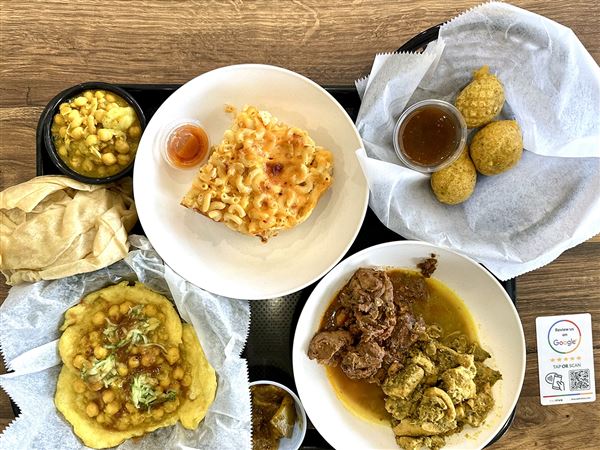Say the words “child bride,” and unsavory connotations are likely summoned. I realized this while workshopping a draft of a story I wrote based on my grandmother, who, at the age of 12, was married to a much older man and had her first child in Beirut, Lebanon.
My fellow workshoppers likened my grandmother to tales of child brides in Afghanistan or some NPR story about a place far away where women were treated as chattel. I remember feeling insulted that her story would be synonymous with another woman’s story elsewhere.
I’ve come to understand my grandmother’s early marriage and motherhood as a family’s desperate solution to a largely economic problem, and view University of Pittsburgh writing professor Angie Cruz’s third novel, “Dominicana,” in a similar light.
Flatiron Books ($26.99).
Inspired by the author’s mother, “Dominicana” tells the story of the marriage of 15-year-old Ana Cancion from rural Guayacanes, Dominican Republic, to Juan Ruiz, a man 17 years her senior who immigrated to New York City. There is no future in DR: Ana’s siblings sell fruit on the street, the family farm struggles to make ends meet, and political tensions grow.
Ana’s marriage to Juan provides a solution for her entire family. “[T]his marriage is bigger than me. Juan is the ticket for all of us to eventually go to America.” After a hasty ceremony, Ana arrives in New York City in February 1965, where she is shocked by the frigid temperatures and Juan’s filthy apartment.
Juan and Ana’s domestic strife is cast amidst a vivid historical backdrop featuring the assassination of Malcolm X, Vietnam War protests and the Dominican civil war. Juan isolates Ana inside the apartment and becomes physically abusive with her. He comes home from work late, drunk, often angry about some mistreatment. Ana learns that many of Juan’s evening absences are due to a long-term affair with another woman.
“Dominicana” is chock-full of sociological insights on immigrant experiences, such as its depiction of the fluidity between power and powerlessness, and how the wounded pride of immigrant men in the public arena is reclaimed within the home through hyper-masculinity and physical abuse. “Inside the apartment, he is a bull. On the street, he looks small, vulnerable, even scared.”
This perspective on how roles shift and reverse depending on context opens up a space for radical empathy. It’s as if the novel doesn’t allow us to hate Juan for his infidelity and abuse, because we understand how he, too, was forced into marriage and into the role of a family’s savior: “I went and married her, trying to make the whole goddamn world happy, but nobody’s happy. Nobody.”
Shortly after Ana becomes pregnant, Juan goes back to DR to take care of family business and appoints Cesar to take care of Ana. Without Juan’s shadow over her, Ana blossoms, exploring the city, taking English classes, and selling Dominican food. Cesar encourages Ana to dream big, to “buy a small cart like the hot-dog man’s. Eventually a small shop. Then a chain of shops all over the city.” A relationship develops between them, but in the end, family obligation takes precedence.
Any child of immigrant parents knows that their life was made possible through the sacrifice of those before them. “Dominicana” delves into that immigrant sacrifice, showing how the illusion of a better life in America and the expectations of those in the old country become both motivation and prison. It’s a novel that dares you to put it down, that rings with truth in every page while it entertains and offers tender and heart-wrenching moments in equal measure.
On their wedding day, Juan bought Ana a ceramic Dominicana doll (a Dominican woman); her hollow form becomes the receptacle for small amounts of cash that Ana makes cooking, but it also serves as a symbol for her current state: “My sweet, hollow Dominicana will keep all my secrets: she has no eyes, no lips, no mouth.”
“Dominicana” tells the story of the hollowed-out woman; it gives shape and shadow to a narrative that has been erased and recalls other stories of immigrant women to mind in a way that feels like a long-overdue acknowledgement of all women with similar experiences.
As I read the story based on Ms. Cruz’s mother, I remember my own, a child bride from another country with a similar story of sacrifice and quiet suffering. But most of all, I remember her strength.
Correction: an earlier version of this book review identified the author’s grandmother as the inspiration for this novel. It was her mother.
Julie Hakim Azzam is the MFA program coordinator in the School of Art at Carnegie Mellon University. Twitter: @JulieAzzam.
First Published: October 5, 2019, 2:00 p.m.















